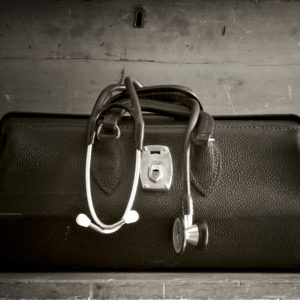Rural America has a health care access problem, and contrary to popular belief, it doesn’t necessarily relate to the debates over Medicaid or Obamacare’s repeal currently dominating Washington politics.
Regardless of how “good” someone’s insurance is, or whether they have insurance at all, access will continue to be a problem if there are not enough health care professionals to serve them. Experts are debating whether the United States has a shortage of doctors. But, at the very least, we have a problem because of where those doctors are located. Rural America is at the bottom of many doctors’ lists when it comes to where they would prefer to practice.
Two policies could dramatically ease the difficulty of accessing health care across the country — and they have nothing to do with insurance and don’t even need federal approval.
First, states can relax the laws governing nurse practitioners (NPs) and physician assistants (PAs). These two groups of professionals supply many of the services historically provided only by doctors, and within the scope of their education and training, they can provide care as safe and effective as that supplied by doctors. However, many states still limit the services NPs and PAs can provide and legally require them to be supervised by doctors.
When appropriate, untethering NPs and PAs from doctors would allow them to provide care in areas of the country that lack providers. For example, suppose an NP wants to move to a rural area and care for patients that routinely travel two or three hours to the nearest doctor.
If that state requires that a doctor supervise her practice — even for the most routine care — she will be tethered to those faraway doctors and face the exact same travel problems as patients. If the state allows NPs to practice routine care independently, her presence can make a real difference for rural patients.
My new research bears out this story using data on the location of doctors, NPs, and PAs across the country. When states allow NPs to practice independently of doctors, the number of NPs in areas with few doctors increases by as much as 60 percent. In areas with more doctors, the increase in the number of NPs is smaller, and the number of NPs in areas with the most doctors actually declines. This suggests that, when NPs can practice independently, they move to the areas in most need.
Second, states can limit the malpractice liability faced by health care providers. While most research suggests that the risk of malpractice liability has recently declined, providers still report changing which patients they treat because of legal concerns. To address these problems, states can enact legal reforms, such as capping the amount of money courts can award for difficult-to-quantify injuries like pain and suffering (i.e., non-economic damages).
While controversial because they can limit the compensation that legitimately injured patients can obtain, caps on non-economic damages can increase the supply of doctors in rural areas. My research shows that the same holds true for NPs and PAs. When states enact caps on non-economic damages, the number of NPs and PAs in areas with few doctors can jump by over 50 percent.
Though neither relaxing the legal restrictions on NPs and PAs nor capping non-economic damages is a silver bullet that will solve all of our health care problems overnight, they are both relatively cheap and easy-to-implement ways for states to take matters of access into their own hands.

